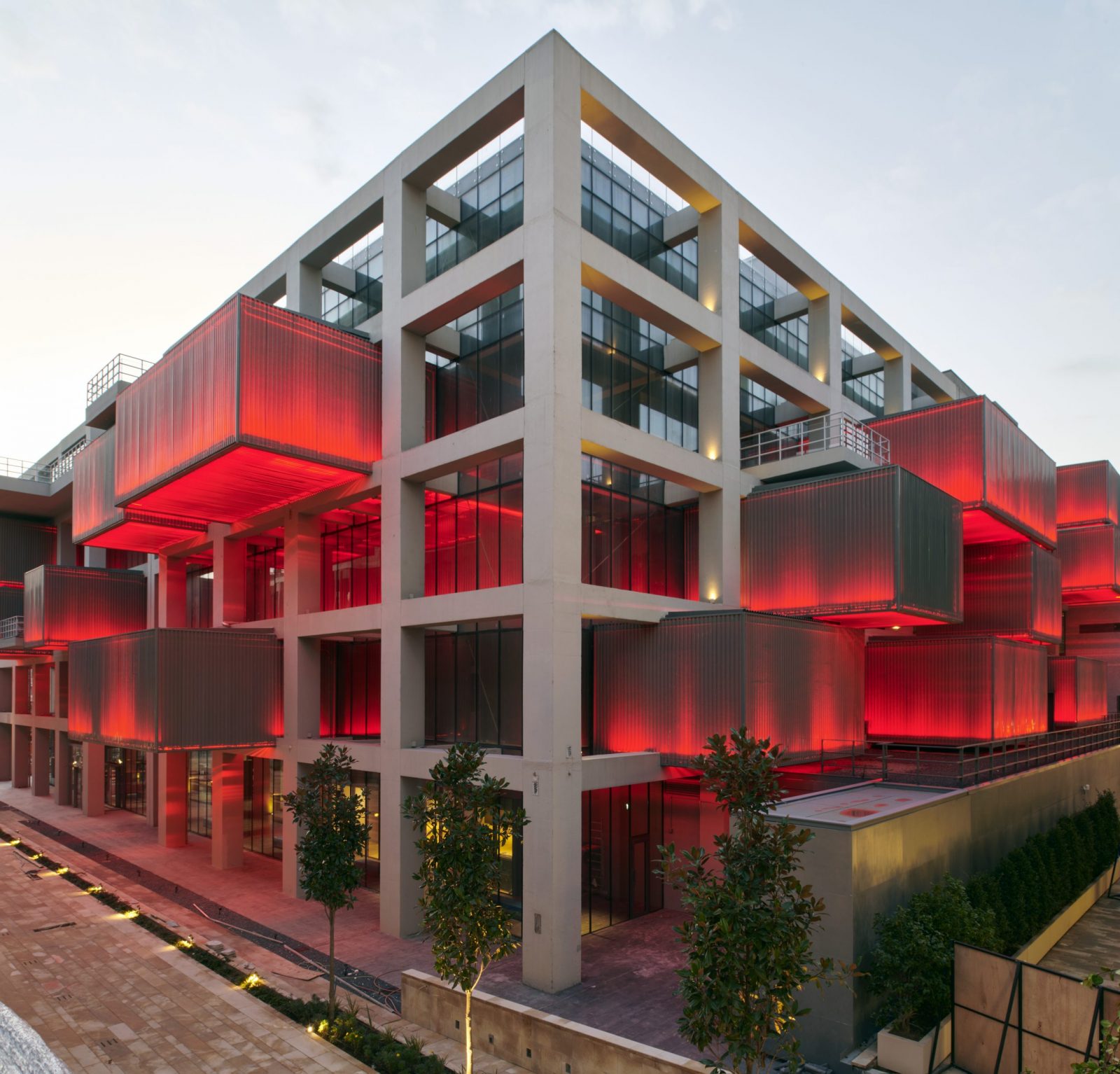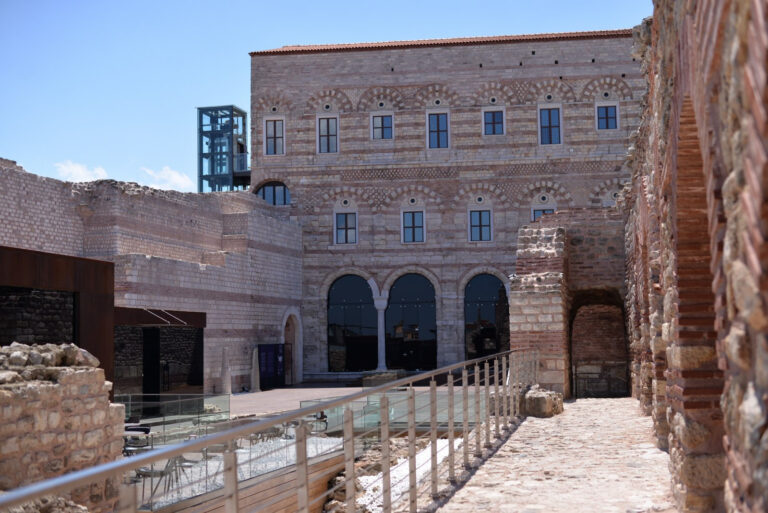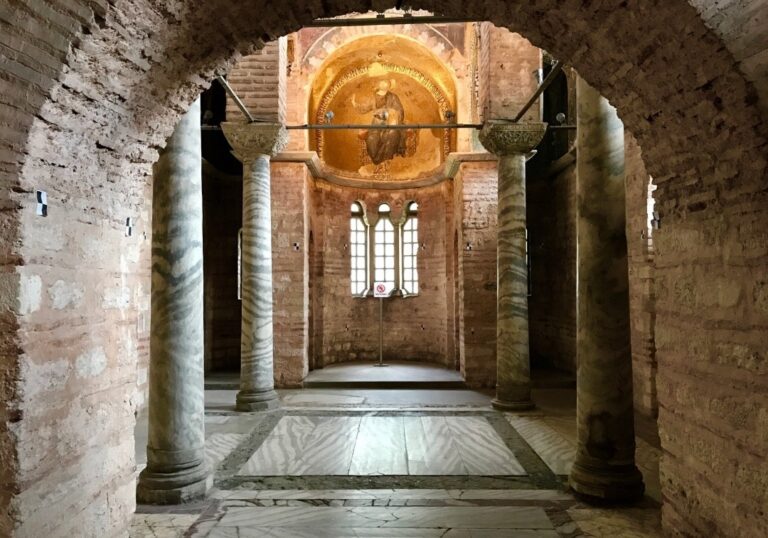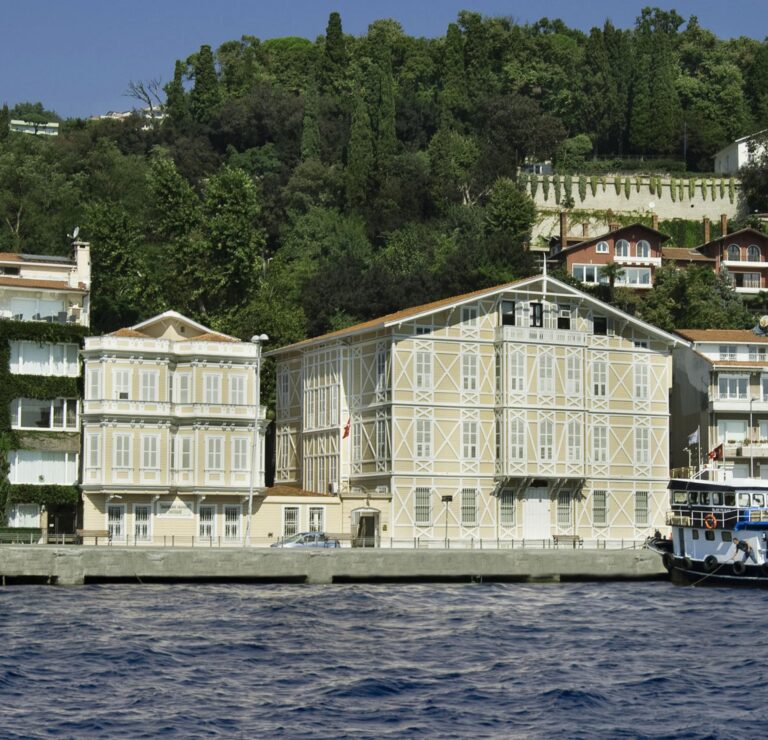Mimar Sinan University of Fine Arts Painting and Sculpture Museum
The Istanbul Painting and Sculpture Museum (İRHM), Turkey’s first plastic arts museum, was established on July 18, 1937, in the Crown Prince’s Quarters of Dolmabahçe Palace. This significant cultural institution was inaugurated by Atatürk on September 20, 1937. The museum’s management was initially tied to the Academy of Fine Arts, now known as Mimar Sinan Fine Arts University, with painter Halil Dikmen appointed as its first director.
Visiting Hours:
- Tuesday: 10:00 AM – 8:00 PM
- Other Days: 10:00 AM – 5:00 PM
- Monday: Closed
- Special Days: Closed on the first day of public holidays and on January 1st.
Admission Fees:
- Turkish Citizens (Full Ticket): 120 TL
- Discounted Ticket: 60 TL (Students over 18 years)
- Group Discount: 20% off for groups buying 10 or more tickets in a single purchase
- Non-Turkish Citizens: 300 TL
- Free Admission: Children (0-18 years), Turkish citizens over 65, veterans and their families, disabled individuals and one companion, teachers, military personnel, ICOM, ICOMOS, UNESCO cardholders, and press cardholders.
- Free on Tuesdays (4:00 PM – 8:00 PM): For all students
Group Visits: With approval from the museum’s directorate and the rectorate, group visits can be arranged outside of regular hours and on closed days. Charges apply per 25 people per hour at a double ticket rate. This does not include those entitled to free admission. Group size is limited to 15 individuals.
Transportation to the Museum:
- Bus: Fronting the “Salı Pazarı” bus stop. Bus lines 26, 26A, 28, 28T, 30D, 70KE.
- Tram: 5 minutes from “Tophane” stop on T1 Kabataş-Bağcılar tramway line.
- Ferry: 10 minutes from Kabataş and Karaköy ferry docks for visitors from the Asian side.
- Parking: Paid parking available at Galataport for car arrivals.
- Metro: 15 minutes from “Şişhane” stop on the Yenikapı-Hacıosman metro line.
- Funicular: 15 minutes from F1 Kabataş-Taksim and F2 Karaköy-Beyoğlu Historic Tunnels.
History and Evolution: The museum’s first exhibition featured selections from the Elvâh-ı Nakşiye Collection of the School of Fine Arts, Dolmabahçe Palace, Topkapı Palace Museum, the “Half-Century of Turkish Painting” exhibition, and various state departments. Since its inception in 1937 with a collection of 320 works, the museum has grown to around 12,000 pieces today, through donations and purchases. The Istanbul Painting and Sculpture Museum has been instrumental in expanding its collection and contributing to the establishment of the first painting galleries in Anatolia, in line with the Republic’s cultural policies. Artworks from İRHM also helped establish the Ankara and Izmir Painting and Sculpture Museums.
Recent Developments: In 2007, the museum underwent a significant renovation, moving its collection in 2011 to Antrepo 5 in the Tophane neighborhood. The building, designed by Sedad Hakkı Eldem and transformed into a museum by architect Emre Arolat, completed its construction phase in 2021, marking the beginning of the museum’s reopening process with the “Exhibition of the Exhibition II.”
Chronological Highlights:
- 1882: The first higher education institution in the arts in Turkey, Mekteb-i Sanâyi-i Nefise-i Şahâne (now Mimar Sinan Fine Arts University), was founded. The renowned painter, archaeologist, and museologist Osman Hamdi Bey was appointed as the founding director.
- 1887: On January 4, 1887, a decision was made to establish a separate museum for “painting and carving works” alongside the Asar-ı Atika Museum as per the directive of the Directorate of Fine Arts.
- 1909: The Ottoman Painters Society was established. A year later, the society’s publication, the Ottoman Painters Society Gazette, was launched.
- 1910: After the death of Osman Hamdi Bey, his successor Halil Edhem Bey initiated the establishment of the museum and secured an annual additional funding of 1000 liras from the Parliament for building the collection.
- 1911: Purchases of paintings began for the museum’s first collection and copies of works from European museums were commissioned. This formed the initial Elvâh-ı Nakşiye Collection.
- 1914: The İnâs Sanayi-i Nefise Mektebi, a school for girls covering only painting and sculpture departments, was opened.
- 1915: On October 27, 1915, the Elvâh-ı Nakşiye Collection was exhibited in the grand hall of the Sanayi-i Nefise Mektebi.
- 1916: The first of the Galatasaray Exhibitions, which would continue until 1952, was organized by the Ottoman Painters Society.
- 1917: The Şişli Workshop, known as the Harbiye Nezareti Atölyesi, was established in a mansion in Şişli with the initiative of Celal Esad Arseven and permission from the Minister of War, Enver Pasha. Notable artists like İbrahim Çallı, Namık İsmail, Hikmet Onat, Sami Yetik, Ali Sami Boyar, Ali Cemal Benim, and Mehmet Ruhi Arel were part of this workshop.
- 1918: Works produced at the Şişli Workshop were exhibited in Vienna under the name “War Panels.”
- 1919: The Sanâyi-i Nefise Mektebi moved to a very small and inadequate building in Şehzadebaşı. During this period, the museum collection was kept at the Müze-i Hümayûn.
- 1921: 56 paintings from the Vienna Exhibition were added to the Elvâh-ı Nakşiye collection.
- 1926: Sanâyi-i Nefise Mektebi moved from Fındıklı Çifte Sarayları to Cemile Sultan Palace. On July 21, 1926, a decision was made to set up a room in the building as a Painting Museum, and the collection from the Müze-i Hümâyûn depot was moved here.
- 1931: With a growing collection of 141 pieces including works by 87 local and 10 foreign painters, as well as 44 copied works, the search for a permanent exhibition space began.
- 1936: The “Half-Century of Turkish Art” exhibition at the Academy highlighted the need for a painting and sculpture museum in Turkey, accelerating the establishment process.
- 1937: On July 18, 1937, the Crown Prince’s Quarters of Dolmabahçe Palace were allocated by Atatürk to the Academy of Fine Arts for the Istanbul Painting and Sculpture Museum. Halil Dikmen, a faculty member from the academy, was appointed as the director. The collection reached 320 pieces with additions from Dolmabahçe Palace, Topkapı Palace Museum, the “Half-Century of Turkish Art” exhibition, and various state departments. The museum opened its first exhibition on September 20.
- 1939: A year after its inauguration, the museum was closed due to the onset of World War II and its adverse effects.
- 1951: After a 12-year hiatus, the museum reopened to the public. It subsequently hosted several significant exhibitions: 1952/Unesco Exhibition, 1953/Today’s Italian Art Exhibition, 1954/Japanese Prints Exhibition, 1956/Turkish Architectural Works Survey Exhibition, 1957/Osman Hamdi Bey Exhibition, 1958/Turkish Folk Art Stone Printing Pictures Exhibition, 1959/Historical Italian Engravings Exhibition.
- 1976: The museum was closed on February 18 due to insufficient protection against fire hazards.
- 1980: The Painting and Sculpture Museums Association was established. The association initiated a productive period, extending the museum’s reach and opening it up to the public. Educational programs in a museum environment were first introduced by the association at the İRHM.
- 1980: The first “Contemporary Artists Exhibition,” which would continue for many years, was held at the Istanbul Painting and Sculpture Museum on June 25, 1980.
- 1981: The museum reopened to visitors on March 3, 1981, after being closed for five years.
- 1986: The first comprehensive restoration of the museum was initiated.
- 1995: The first museum website and virtual museum project in Turkey was developed for the Istanbul Painting and Sculpture Museum.
- 2003: The “Mimar Sinan University of Fine Arts Painting and Sculpture Museums Regulation” was published in the Official Gazette No. 25023 on March 17, 2003, and came into effect.
- 2007: The museum entered a comprehensive restoration process and was closed to visitors.
- 2009: While restoration continued, a selection of works from the museum’s 1937 opening exhibition was displayed in the “Exhibition of the Exhibition.” Curated by Prof. Semra Germaner, this was the last exhibition in the Crown Prince’s Quarters of Dolmabahçe Palace.
- 2011: The museum collections were moved from Dolmabahçe Palace’s Crown Prince’s Quarters to Antrepo No. 5 in the Tophane neighborhood.
- 2012: The transformation project of Antrepo No. 5, designed by Sedad Hakkı Eldem, into a contemporary museum building by architect Emre Arolat was initiated.
- 2014: A temporary exhibition titled “From Elvâh-ı Nakşiye to Today: Selections from the MSGSÜ Painting and Sculpture Museum Collections” was organized in the entrance hall of the still-under-construction Antrepo No. 5.
- 2019: While the museum’s construction continued, inventory counting and restoration work began.
- 2020: The inventory counting and restoration work at the museum slowed down from March 2020 to October 2021 due to the global COVID-19 pandemic. During this time, supplementary construction began for landscaping, offices, and the sculpture workshop.
- 2021: On February 4, 85 security and cleaning staff positions were allocated to the museum. On February 11, Hasan Karakaya was appointed as the Museum Director. On March 24, 10 restorers were assigned by the Ministry of Culture and Tourism to expedite the museum’s opening process. On May 24, the museum’s Board of Directors was established. On June 12, the board held its first meeting and planned to complete the museum’s opening process within a year. On June 30, construction processes in the museum were completed. Preparations for the first of the “Opening Process Exhibitions,” “Exhibition of the Exhibition II,” began under the curatorship of Zeynep İnankur, Burcu Pelvanoğlu, and Ali Kayaalp. On December 15, the museum opened its doors to visitors.
- 2022: As part of the 140th-anniversary events of Mimar Sinan Fine Arts University, the “Osman Hamdi Bey Exhibition from the Istanbul Painting and Sculpture Museum Collection” curated by Zeynep İnankur opened on March 31. On April 28, the “Selections from the Fine Arts Academy Calligraphy Collection with Turkish Painting’s Calligraphic Trends Exhibition” by Uğur Derman and Ali Kayaalp was opened.
Museum Architecture: The number 5 warehouse in the Karaköy port area was allocated to Mimar Sinan Fine Arts University in 2009 for transformation into the Istanbul Painting and Sculpture Museum. This project aimed to repurpose a socially inert area into a unique and qualitative museum structure, housing thousands of valuable artworks, including significant pieces of modern Turkish painting. The design process by EAA involved considering the region’s history and integrating the existing structures’ characteristic features, especially the concrete grid structure of the warehouses. The museological approach envisioned categorizing artworks according to different curatorial perspectives and distributing them across galleries. The structure’s transparent surface was developed with an original system, referencing the building’s industrial past, creating surprising perspectives between galleries and establishing an environment where visitors can connect with the city.
With these structural features, the MSGSÜ Istanbul Painting and Sculpture Museum is expected to become a new, original, and vibrant cultural hub within the city’s cultural landscape.




